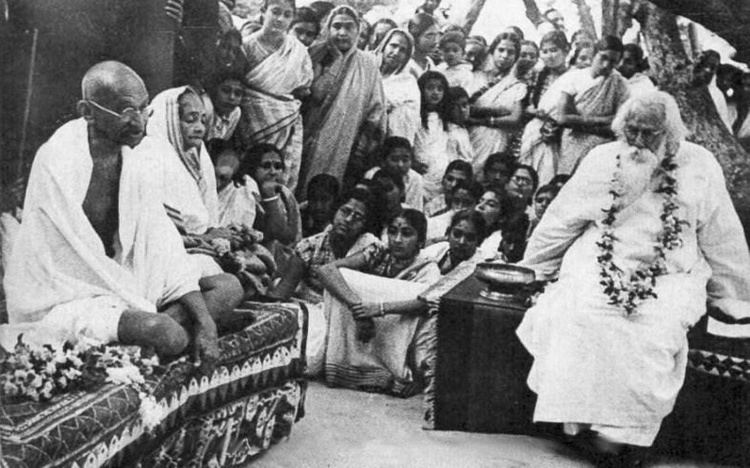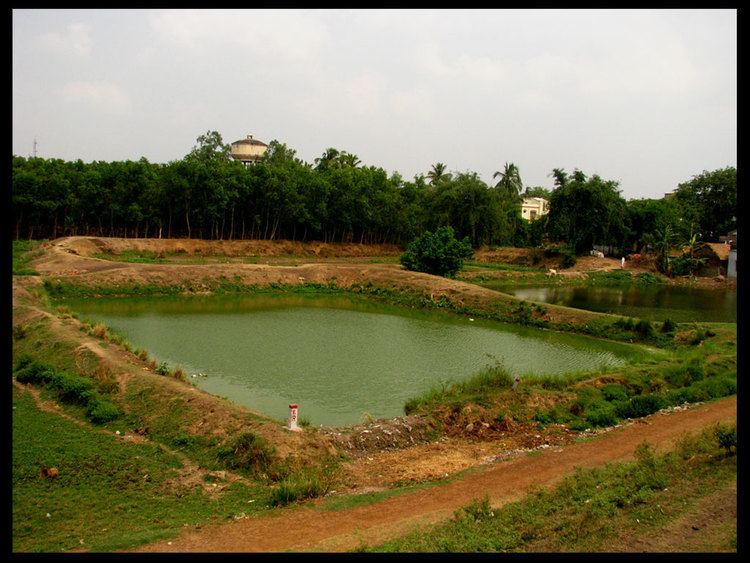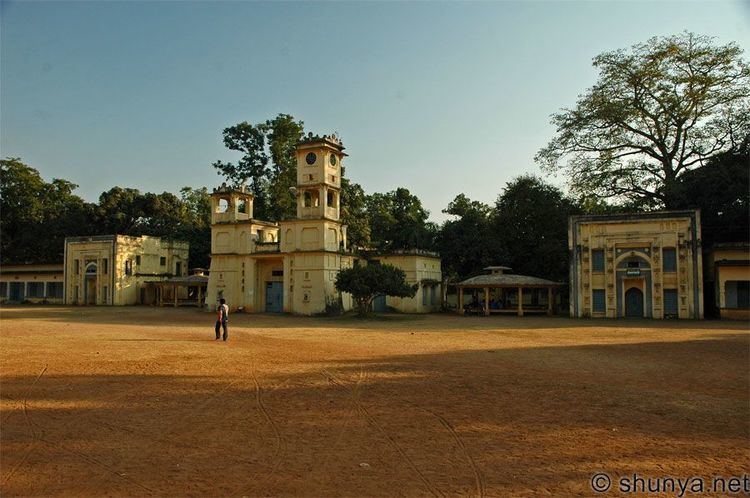State West Bengal | District Birbhum | |
 | ||
University Visva-Bharati University Languages spoken Bengali, English | ||
Map of Santiniketan
Santiniketan (Bengali: শান্তিনিকেতন Santiniketôn) is a small town near Bolpur in the Birbhum district of West Bengal, India, approximately 160 km north of Kolkata (formerly Calcutta). It was established by Maharshi Devendranath Tagore, and later expanded by his son Rabindranath Tagore whose vision became what is now a university town, Visva-Bharati University.
Contents
- Map of Santiniketan
- History
- Notable people
- Geography
- Climate
- Major events
- Gardens and parks at Santiniketan
- Transport
- References

History

Santiniketan was earlier called Bhubandanga (after Bhuban Dakat, a local dacoit), and was owned by the Tagore family. In 1862, Maharshi Devendranath Tagore, while on a visit to Raipur, showed interest in land near Birbhum. There was only one building there namely 'Santiniketan' (which is still there adjacent the upasana mandir known as 'Odisha Bhawan'). Maharshi liked the place and registered it in the name of Maharshi Devendranath against Rupee One as a token value. He called his home Santiniketan (after the name of the house). Santiniketan became a spiritual centre where people from all religions were invited to join for meditation and prayers. He founded an ashram here in 1863 and became the initiator of the Brahmo Samaj.
Here Rabindranath Tagore started Patha Bhavana, the school of his ideals, whose central premise was that learning in a natural environment would be more enjoyable and fruitful. After he received a Nobel Prize in 1913, the school was expanded into a university in 1921. In the year 1924 based on the same ideology and with the intention of educating and training the people belonging to deprived part of the society he founded Siksha-Satra with only 7 students. The journey initiated by Kabiguru to kickstart the education system transformation slowly turned into a reality when the institution was recognised as the first university to be reccognised in the year 1951 by central government. Over the course of time university has witnessed the growth of talented singers, artists, academicians and scientists contributing to the various domains.
Notable people
Geography
Santiniketan is at 23.68°N 87.68°E / 23.68; 87.68. It has an average elevation of 56 metres (187 feet).
Climate
Santiniketan can be visited at any time of the year. The climate is moderately warm, with summer temperatures at around 34-45 °C and winter at 8-15 °C. July and August see heavy rainfall.
Major events
Social and cultural events take place throughout the year. These include Basanta Utsav, Barsha Mangal, Sharodutsav, Nandan Mela, Poush Mela, Magh Mela, Rabindra Jayanti to name a few.
Of these, the Poush Mela is a major tourist attraction. It is a three-day fair (Bengali, mela means a fair), starting on the seventh day of the Bengali month Poush (usually, last week of December). It fetches tourists, artisans, folk singers, dancers, and the traditional Baul from the neighbourhood.
Gardens and parks at Santiniketan
There is a Deer Park 3 km from Santiniketan. Originally, the area was a fast eroding 'Khowai'. It is now a large wooded area with herds of deer and makes a natural bird sanctuary.
